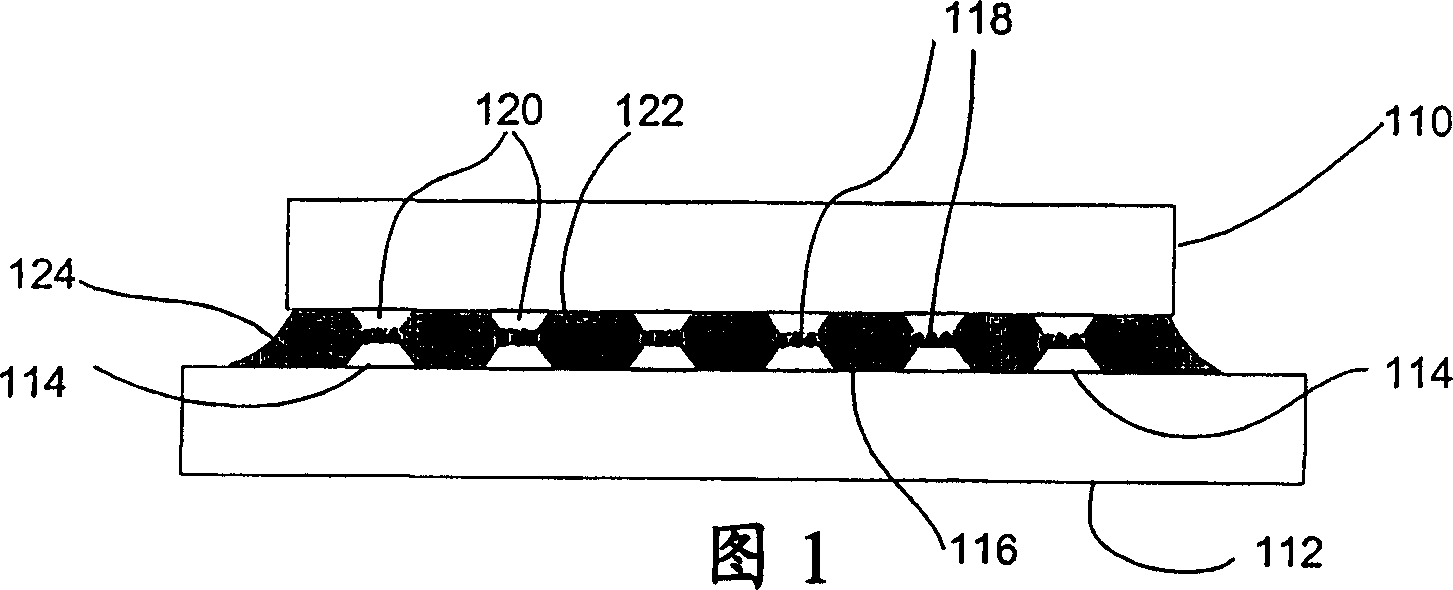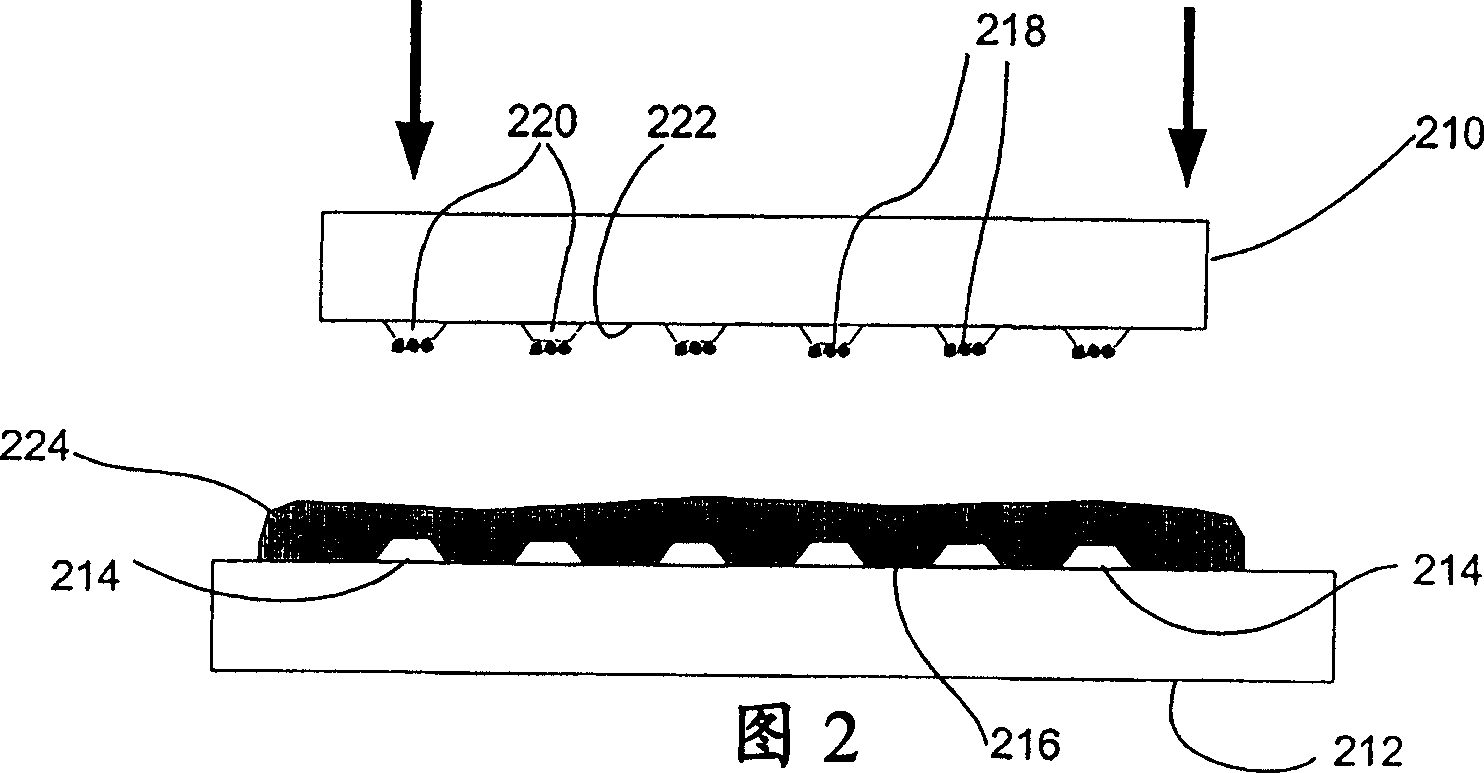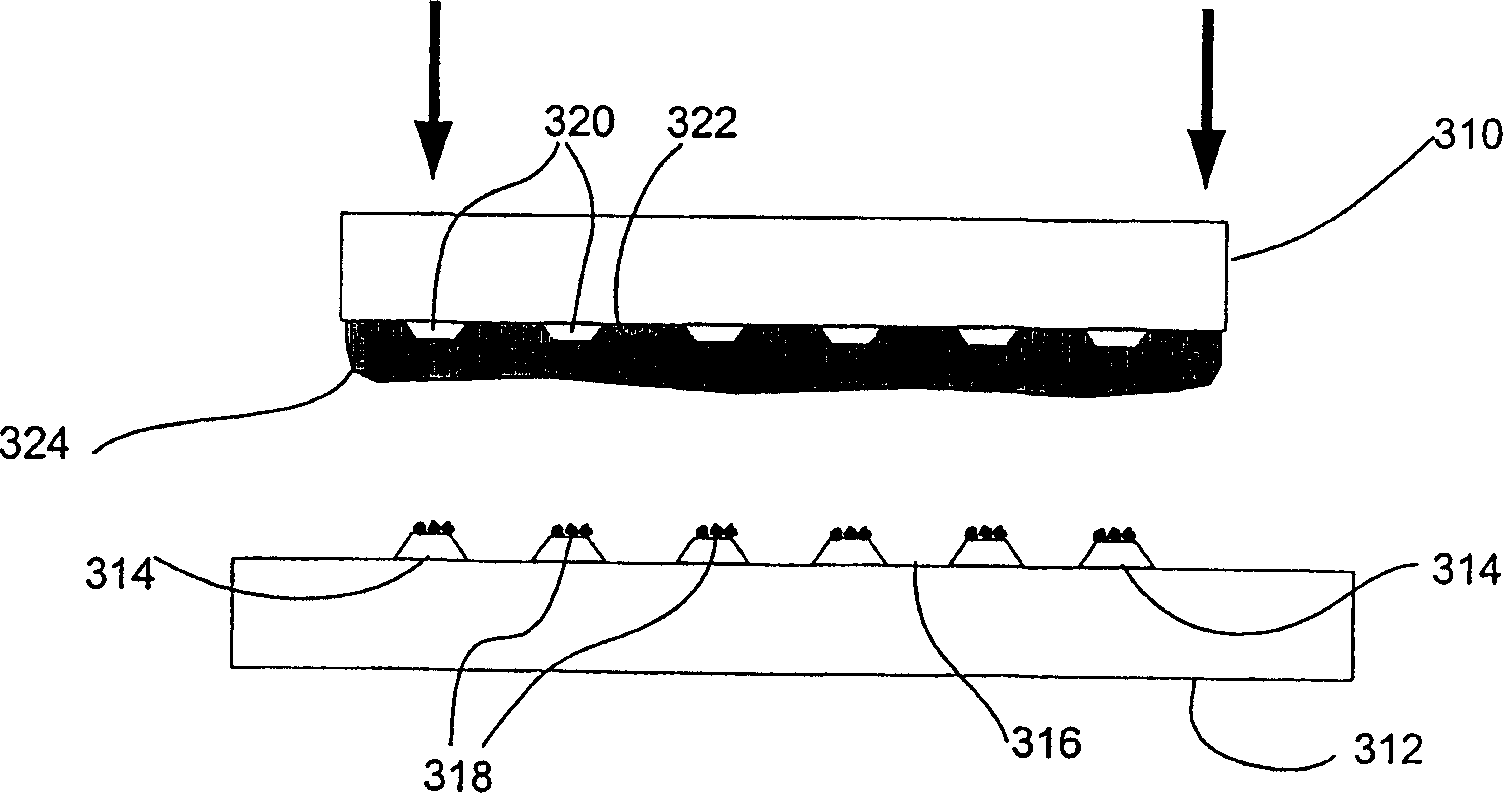Electrical component assembly and method of fabrication
A technology for electrical components and components, applied in the direction of electrical components, assembling printed circuits with electrical components, and manufacturing printed circuits, etc. problems, resulting in shorter manufacturing cycle times, improved electrical performance, and improved reliability
- Summary
- Abstract
- Description
- Claims
- Application Information
AI Technical Summary
Problems solved by technology
Method used
Image
Examples
example 1
[0094] The following process is used to prepare the metallized contacts on the copper flex circuit, more specifically the metallized contacts to be used to electrically connect the flex circuit to the antenna coil within the body of the smart card.
[0095] To form the base nickel metallization, test samples were taken with patterned copper traces and contact pads overlying the flexible circuit substrate. The test samples also included a layer of photoresist covering the copper traces and exposing the contact pads. For the purpose of the experiment, the flexible circuit test substrate was obtained from Multitape GmbH, Salzkotten, Germany.
[0096] Metallization of the contact pads was produced by electroplating nickel on the base copper pad in a first nickel plating bath to a height of about 70 microns. The bath contained nickel sulfamate ("Electropure 24" from Atotech (State College), Pennsylvania, USA) at 80 g / L nickel and nickel bromide in a nickel electroplating solution ...
example 2
[0100] The test samples described in Example 1 were plated in the first nickel plating bath for about 2 minutes. A second plating bath was prepared when using the nickel plating solution described in Example 1, but instead of nickel plated diamond particles, commercial grade silicon carbide particles from Fujimi Industries were increased to a concentration of about 1 gram / liter. The silicon carbide particles are about 14 microns in size. Electroplating process at about 100A / ft 2 is performed at current densities. Also, the agitation in the tank is turned off immediately before the sample is submerged in the tank. After electroplating the silicon carbide layer, the sample was returned to the first electroplating tank for 6 minutes to form an adherent layer covering the particle layer.
example 3
[0102] The test samples described in Example 1 were plated in the first nickel plating bath for about 12 minutes. A second plating bath was prepared using the plating solution described in Example 1, but instead of the nickel-plated diamond particles, uncoated, 14 micron diamond particles were added to the bath to a concentration of 1 g / L. The agitation in the tank was turned off, and the test sample was submerged in the tank for a period of time sufficient to form a diamond layer of about 25 to 35 microns in thickness. Electroplating process at about 100A / ft 2 is performed at current densities. After electroplating in the particle tank, the samples were returned to the first plating tank for 7 minutes to form an adherent layer covering the diamond particle layer.
PUM
| Property | Measurement | Unit |
|---|---|---|
| modulus | aaaaa | aaaaa |
| modulus | aaaaa | aaaaa |
| thickness | aaaaa | aaaaa |
Abstract
Description
Claims
Application Information
 Login to View More
Login to View More - R&D
- Intellectual Property
- Life Sciences
- Materials
- Tech Scout
- Unparalleled Data Quality
- Higher Quality Content
- 60% Fewer Hallucinations
Browse by: Latest US Patents, China's latest patents, Technical Efficacy Thesaurus, Application Domain, Technology Topic, Popular Technical Reports.
© 2025 PatSnap. All rights reserved.Legal|Privacy policy|Modern Slavery Act Transparency Statement|Sitemap|About US| Contact US: help@patsnap.com



